William Davis's Blog: Dr. Davis Infinite Health Blog, page 101
August 19, 2016
Just like Atkins’ . . . only better

This question comes up with some regularity: Is the Wheat Belly lifestyle like the Atkins’ diet? Is Wheat Belly just another name for a low-carb diet?
There are indeed some important areas of overlap. The Wheat Belly lifestyle, for instance, adheres to the concept that carbohydrates, not fats, are responsible for destructive health effects and weight gain. We also need to give Dr. Robert Atkins and his low-carb predecessors great credit for voicing their opinions during an age when low-carb was an heretical, against-the-mainstream concept, given the antics of Dr. Ancel Keys, Dr. Henry Blackburn, the US Department of Health and Human Services and others. Atkins, low-carb, and Wheat Belly all concur: carbs raise blood sugar, generate resistance to insulin, add to metabolic syndrome/type 2 diabetes, and add substantially to risk for heart disease, cancer, and dementia. Cutting dietary fat is unfounded, destructive, and wrong. No differences here.
But we have the advantage of several decades of new information since Dr. Atkins’s book was first published in 1972, including exposure of the workings of agribusiness and geneticists and the evolving science behind issues such as bowel flora and endocrine disruption, none of which was known or fully appreciated until recently.
So Wheat Belly takes the basic Atkins/low-carb arguments several steps further. These are not small steps, but crucial steps that can make the difference between having an autoimmune disease or not having an autoimmune disease, having fibromyalgia or not having fibromyalgia, being infertile or suffering multiple miscarriages or not being infertile and not having multiple miscarriages—big differences.
Among the concepts that are unique to Wheat Belly but never articulated by Dr. Atkins or the low-carb world are:
Wheat and grains are absolutely banned on the Wheat Belly lifestyle–The Atkins diet and low-carb diets all add back “healthy whole grains” in their latter phases, as they were viewed as healthy and necessary. But those of you familiar with the Wheat Belly concepts recognize that wheat and grains are the worst foods to add back, as they reintroduce gliadin-derived appetite stimulation, gliadin-provoked autoimmune diseases, high blood sugars from amylopectin A, nutrient deficiencies from phytates, allergic reactions to multiple proteins and other issues. Re-exposure also makes you ill and is not a nice thing to endure. Adding back grains also explains why many Atkins/low-carbers regain their weight after an initial success.
Wheat Belly highlights the addictive, appetite-stimulating effects of the gliadin protein of wheat and related proteins of other grains–Without understanding this issue, people add back grains or have small indulgences, even through medications or nutritional supplements, and then fail to understand why they lose control over appetite and impulse, what I call the “I ate one cookie and gained 30 pounds” effect.
Wheat Belly addresses the historical and anthropological bases for the destructive health effects of the seeds of grasses–Not only does Wheat Belly reject the notion of “healthy whole grains,” but discusses why this dietary mistake was made and why it is a huge error to view grains as human food.
Wheat Belly addresses bowel flora disrupted by grains (and other factors)–Cultivating healthy bowel flora improves bowel health and regularity, improves metabolic factors such as blood sugar and blood pressure, improves mood, and reduces risk for colon cancer. Cultivating healthy bowel flora avoids the health deterioration suffered by long-term low-carbers who, over time, develop a rise in blood sugar, a drop in HDL cholesterol, a rise in triglycerides, constipation, depression, and other effects due to uncorrected dysbiosis and lack of prebiotic fibers to nourish bowel flora.
Wheat Belly addresses other issues crucial for health–Thyroid health and iodine are prominent features on the Wheat Belly discussion. If you have undiagnosed or uncorrected hypothyroidism, for instance, no diet will cause weight loss and you will be exposed to dramatically increased risk for cardiovascular disease and death. Vitamin D needs to be addressed, as do magnesium and omega-3 fatty acids. Not addressing these issues compromises health substantially, while adhering to all Wheat Belly concepts allows a powerful synergistic effect to emerge, what I call the “2 + 2 =11” Wheat Belly effect.
Wheat Belly shows how to recreate familiar grain-based, high-carb, high-sugar foods–When I first introduced Wheat Belly concepts to patients in my heart disease practice, I was a purist and asked people to eat only real, whole foods and not try to recreate familiar grain-based or sugary foods. But I quickly learned that holidays, kids and grandkids, and entertaining botched things up and people would go off program, then suffer recurrences of numerous health conditions and regain oodles of weight. So I learned how to recreate foods like cookies, muffins, pies, and cheesecake using benign ingredients like almond and coconut flour, stevia and monkfruit. When I shared this with my patients, I witnessed them successfully navigate all these occasions with none of the problems. This is because Wheat Belly alternatives do not provoke high blood sugars, trigger addictive eating behavior/appetite, or create nutrient deficiencies. You can indulge without paying a health price.
Wheat Belly is, first and foremost, a program to restore health by rejecting many pieces of conventional “wisdom,” a dietary program and lifestyle that reverses many of the modern diseases that plague us. Atkins and low-carb simply provide one piece of that solution, but far from the complete picture. Follow the Wheat Belly lifestyle and you obtain the same initial health benefits as the Atkins/low-carb approach, but you will take health and weight loss farther and have more enduring results.
Also, know that Wheat-Free Market provides products that are consistent with the Wheat Belly lifestyle, and therefore with both the Atkins and low-carb lifestyles, as well.
The post Just like Atkins’ . . . only better appeared first on Dr. William Davis.
August 17, 2016
When is the next “Wheat Belly 10-Day Grain Detox Challenge”?
The next Wheat Belly 10-Day Grain Detox Challenge is scheduled to start Wednesday, August 24th, 2016!
Through my New York Times bestseller Wheat Belly, millions of people learned how to reverse years of chronic health problems by removing wheat from their daily diets. Now, I have created an easy and accessible 10-Day Detox Program. 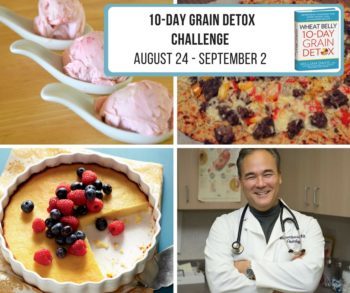
The “Wheat Belly 10-Day Grain Detox” supplies you with carefully designed meal plans and delicious recipes to fully eliminate wheat and related grains in the shortest time possible. Perfect for those who may have fallen off the gluten-free wagon or for newcomers who need a jump-start to weight loss, this new addition to the Wheat Belly phenomenon guides you through the complete 10-Day Detox experience.
In addition to the brand-new quick-start program, I’ll teach you
How to recognize and reduce wheat-withdrawal symptoms,
How to avoid common landmines that can sabotage success
How to use nutritional supplements to further advance weight loss and health benefits.
The “Wheat Belly 10-Day Grain Detox” also includes
Inspiring testimonials from people who have completed the program (and have now made gluten-free eating a way of life)
Exciting new recipes to help get your entire family on board.
To join the Detox Challenge
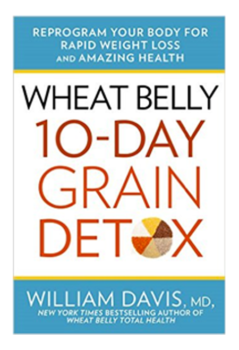
Step 1
Get the book. And read it. Detox Challenge participants should be informed and active in order to get the most out of the challenge and private Facebook group.
Amazon: http://amzn.to/1JqzMea
Barnes & Noble: http://bit.ly/wheatbelly10daygraindetox-bn
Indiebound: http://bit.ly/1KwcFTQ
Step 2
Come join the Private Facebook Group.
http://bit.ly/WheatBelly-PrivateFBGroup
Step 3
Head back to the Private Facebook Group starting August 23rd (the day before the official start of the Challenge) and onwards for tips, video, and discussions to help you get through your detox and reprogram your body for rapid weight loss. Dr. Davis will be posting video instructions and answers to your questions.
Need support? Lapsed and want to get back on board? – Tweet this!
Join the thousands of people who are losing weight and regaining health by following the Wheat Belly 10-Day Grain Detox. Join us if you desire support through the sometimes unpleasant process of wheat/grain detoxification and withdrawal or if you are among those who previously followed the program but lapsed, and now want to get back on board as confidently as possible, this Detox Challenge was made for you.
Yours in grainless health,
Dr. William Davis
The post When is the next “Wheat Belly 10-Day Grain Detox Challenge”? appeared first on Dr. William Davis.
August 16, 2016
Take Control Over Your WEIGHT by Managing Your BLOOD SUGAR?
Monitoring and managing blood sugar is an extremely effective way to
manage carbohydrates and gain control over weight.
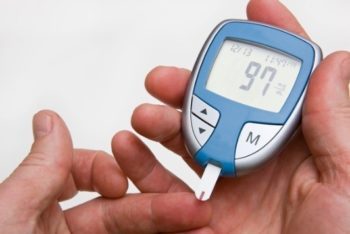
Check blood sugars
Immediately prior to
And then 30 to 60 minutes
After the start of each meal.
Ideally, the blood sugar 30-60 min. after a meal should be no higher than prior to eating.
This simple insight provides
Extraordinary control over metabolism,
Helps rapidly reverse diabetes and pre-diabetes, and
Could even accelerate weight loss.
The goal here is not to control blood sugar with medication or insulin but to identify problem foods that provoke blood sugar and insulin, thereby impairing your weight-loss efforts.
Using a finger-stick blood sugar meter both pre and post-meal can be a very powerful tool for weight loss and the reversal of metabolic distortions such as high blood sugar.
How to apply the information?
If your blood sugar increases from, say, 90 mg/ dl to 140 mg/ dl 30 to 60 minutes after eating, then re-examine the foods you ate to identify the culprit. The answer will be found in some hidden or underappreciated source of carbohydrates. Cut back on your portion size or eliminate that food. In the meantime, go for a walk, ride a stationary bike for 20 minutes, or engage in some other light activity to drop your blood sugar back to its starting level.
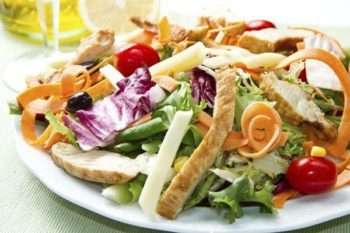 Once a meal has been demonstrated to be safe without raising blood sugar, there is no need to retest that meal in the future, unless you add or change one or more components. After just a few weeks of this, you will know which foods cause blood sugar trouble, and testing will only be necessary when you’re introducing unfamiliar foods.
Once a meal has been demonstrated to be safe without raising blood sugar, there is no need to retest that meal in the future, unless you add or change one or more components. After just a few weeks of this, you will know which foods cause blood sugar trouble, and testing will only be necessary when you’re introducing unfamiliar foods.
Monitoring blood sugars to maintain no change pre- and post-meals works wonders for many people who find they can finally snap out of a stubborn weight plateau .
If you don’t like the idea of checking finger-stick blood sugars, consider having your doctor measure a value called hemoglobin A1c (HbA1c). This value reflects blood sugar fluctuations experienced over the previous 90 days.
The typical primary care doctor will say something like, “Your HbA1c is less than 6.5 percent, so you are okay,” meaning that, you don’t have diabetes and don’t need diabetes medication.
What he or she is not saying is that your HbA1c is ideal and does not have implications for health. That’s just not the case. In fact, people with HbA1c values in the “normal” range say, 5.6 percent are still at an increased risk for heart disease, cancer, hypertension, and dementia.
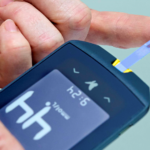
An HbA1c value of 5.0 percent or less represents the ideal level.
If your doctor won’t test you, you can buy in-home test kits for HbA1c from the pharmacy. After you test yourself, make sure you find a new doctor.
Yours in grainless health,
Dr. William Davis
PS: Having the right tools makes every task easier!
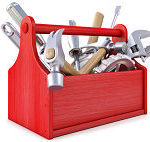
Many people are frightened at the prospect of getting their blood checked for anything, and they are particularly frightened by the prospect of checking it themselves with a Do-It-Yourself Glucose Meter. They’re frightened that it could be painful or expensive, or that it would make them feel like they have diabetes.
 Have no fear! As diabetics and anyone else comfortable with checking blood sugars will attest, the process is easy. It is not painful. The devices used to prick the finger are spring-loaded and cause minimal discomfort.
Have no fear! As diabetics and anyone else comfortable with checking blood sugars will attest, the process is easy. It is not painful. The devices used to prick the finger are spring-loaded and cause minimal discomfort.
Glucose monitors are inexpensive, especially if you obtain a device and test strips from your physician, who will often just give them to you. The device manufacturers give them to physicians, since their money is made on the repeat sales of test strips. If worse comes to worst, you might have to shell out the equivalent of the cost of a nice dinner at a restaurant to purchase a glucose meter and test strips for glucose and ketones.
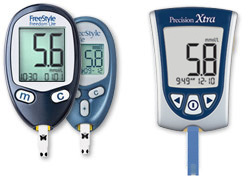 There are a number of options out there. I’ve had good experiences with the OneTouch Ultra, Accu-Chek Aviva, Bayer Contour, and ReliOn brands. The Abbott Precision Xtra tests for both glucose and ketones, using different test strips for each.
There are a number of options out there. I’ve had good experiences with the OneTouch Ultra, Accu-Chek Aviva, Bayer Contour, and ReliOn brands. The Abbott Precision Xtra tests for both glucose and ketones, using different test strips for each.
They are easy to use. Instructions are provided with each device, and it will take about 15 minutes to get any of these up and running. It only takes minutes. Once you get comfortable with the process, it requires just 1 to 2 minutes to obtain a blood sugar or ketone value.
The post Take Control Over Your WEIGHT by Managing Your BLOOD SUGAR? appeared first on Dr. William Davis.
August 15, 2016
The next Wheat Belly 10-Day Grain Detox Challenge starts Wednesday, August 24th!

The next Wheat Belly 10-Day Grain Detox Challenge is scheduled to start Wednesday, August 24th, 2016!
Join the thousands of people who are losing weight and regaining health by following the Wheat Belly 10-Day Grain Detox. Join us if you desire support through the sometimes unpleasant process of wheat/grain detoxification and withdrawal. Or, if you are among those who previously followed the program but lapsed, and now want to get back on board as confidently as possible, this Detox Challenge was made for you.
To join the Detox Challenge:
Step 1)
Get the book. And read it. Detox Challenge participants should be informed and active in order to get the most out of the challenge and private Facebook group.
Amazon: http://amzn.to/1JqzMea
Barnes & Noble: http://bit.ly/wheatbelly10daygraindet...
Indiebound: http://bit.ly/1KwcFTQ
Step 2)
Come join the Private Facebook Group.
http://bit.ly/WheatBelly-PrivateFBGroup
Step 3)
Head back to the Private Facebook Group starting August 23rd (the day before the official start of the Challenge) and onwards for tips, video, and discussions to help you get through your detox and reprogram your body for rapid weight loss. Dr. Davis will be posting video instructions and answers to your questions.
The post The next Wheat Belly 10-Day Grain Detox Challenge starts Wednesday, August 24th! appeared first on Dr. William Davis.
August 11, 2016
Diana back in control of her health with terrific results

Diana Shared her 9-month results living the Wheat Belly lifestyle, along with a good dose of encouragement for anyone else feeling even the least bit discouraged:
“Never in my wildest dreams did I envision losing inches so easily. It’s like melting fat off my body.
“Don’t be discouraged about the number on the scale ever again! Measure and touch your body. Feel your hips and thighs. Remember how they felt so you’ll know when the melting happens.
I don’t remember feeling the bones around my knees except the kneecaps. I feel other bones now. Holy moly, is that a great feeling. My hip bones, like the actual bones, I can now feel. Wow!
My belly is no longer a big giant ballon it’s now a basketball. My butt is not the way it was 9 months ago.“

“What I’ve gained is a sense of accomplishment and self-worth no meeting or TV personality can give me from following a commercial weight loss program. I’ve done this ALONE and on my own. No pre-made meals or store-bought preservatives in my food. I’m chopping, shredding, measuring and cooking my meals. I’m in control of my health for the first time in 56 years. Next month I turn 57 and I intend to not be 200+ pounds next year!!
“You can do this! Don’t EVER give up because EVERY day is a new beginning to start again if something tripped you up. Giving up on yourself isn’t an option since we are all here, too. We’re not giving up on you or ourselves.
“I asked my husband to take a photo of me in this skirt and top on this beautiful day here in Minnesota. I was amazed at how far the skirt went down, as now only my hips are keeping it up. Next year I won’t be wearing this skirt because I’ll be too small!”
Look at Diana’s sideways pose in particular: she has lost an impressive amount of visceral fat that was previously not just a physical impediment, but was the seat of a huge amount of inflammation, now receding powerfully.
As I’ve pointed out many times before, observe what Diana does not have to do while achieving such extravagant results: She is not exercising to extremes, she is not counting calories, she is not pushing the plate away and having to wage a constant battle with hunger. She has removed the extraordinary health disruptions of wheat and grains and is reaping the huge benefits of a return to real, non-grain foods.
I’m looking forward to Diana’s next update, as I predict that nobody here or in her own neighborhood will recognize her!
The post Diana back in control of her health with terrific results appeared first on Dr. William Davis.
August 9, 2016
5 Helpful Kitchen Tools for Your Wheat Belly Kitchen
You already have most of the basic kitchen tools you will need to navigate a grain-free lifestyle. Here are a few utensils, equipment and products that can be helpful in preparing grain-free recipes:
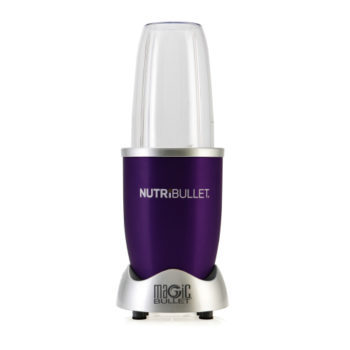
Powerful Blender.It helps to have a blender with a motor that is powerful enough not to stall when we make our Wheat Belly Detox Shakes that include ingredients such as a coarsely chopped potato or a green banana. A Vitamix handles these ingredients easily. I also tried using a less powerful NutriBullet and it handled the job without problems. If you are uncertain about the power of your blender, start by chopping your ingredients to a finer size, then see if your device handles the job. If it does, you can try increasingly
larger pieces. If it doesn’t, then you might consider purchasing a blender with more muscle
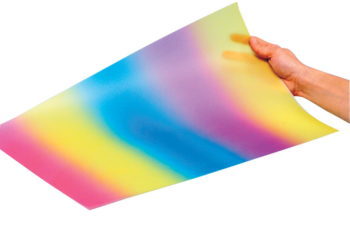
Parchment Paper.Grain-free baking is made easier with a supply of parchment paper for baking pizzas and other dishes. You can eliminate non-stick sprays and It makes clean up much simpler. It is also much better for the environment than tin foil!
Spiral-cutting Device. This device is used to create grain-free noodles. While formerly found only in specialty cooking stores, they are now widely available and can be found in many mainstream department stores. These devices are priceless for quickly and effortlessly creating noodles in a variety of shapes, such as spaghetti or fettuccine. The Spirelli Spiral Slicer, a spiralizer, Veggetti, Benriner Spiral Cutter, and Sur La Table Vegetable and Fruit Spiral Slicer are among the most popular.
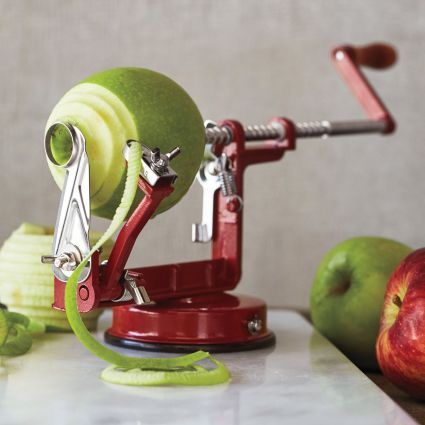
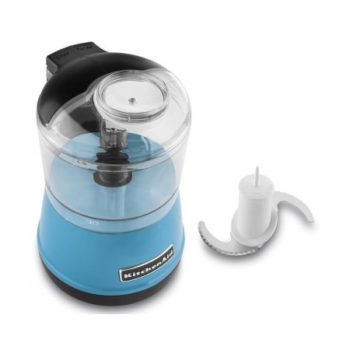
While a food processor works great to grind nuts and other foods, I find that cleanup is a hassle, especially if it’s used with any frequency or for small jobs, such as grinding a handful of nuts.
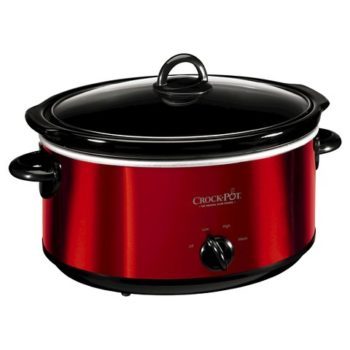
To reduce the cleanup time, I often use a food chopper. KitchenAid sells one for around $35, among others. Even a coffee grinder can get the job done with less time needed for cleanup. To reduce the cleanup time, I often use a food chopper. KitchenAid sells one for around $35, among others. Even a coffee grinder can get the job done with less time needed for cleanup.
Slow Cooker (Crock-Pot).Using this appliance allows me to make almost any recipe with minimal time and effort. Many of us only think of using a slow cooker to prepare heavier foods which are usually eaten in the cooler months. Use it all year round, even during the warmer seasons. I create delicious grain-free meals without having to spend time standing over the stove or heating up the kitchen by using the oven. With our busy lifestyles, we don’t always have the time or energy to cook a meal in the evening. Just think about it; there’s nothing like coming home after a long day to the aroma of a delicious, hot meal waiting for you. Using a slow cooker is a great alternative to grabbing carryout. You will know that your meal is safe from grains because you prepared it!
Having the right tools makes every task easier!
Yours in grainless health,
Dr. William Davis
PS: Deepen your understanding of grain-free living AND give yourself the tools you need to succeed. How about a 4 Star retreat? The Wheat Belly Lifestyle Retreat is a luxurious program designed to do just that!
The post 5 Helpful Kitchen Tools for Your Wheat Belly Kitchen appeared first on Dr. William Davis.
5 Helpful Kitchen Tools
You already have most of the basic kitchen tools you will need to navigate a grain-free lifestyle. Here are a few utensils, equipment and products that can be helpful in preparing grain-free recipes:

Powerful Blender.It helps to have a blender with a motor that is powerful enough not to stall when we make our Wheat Belly Detox Shakes that include ingredients such as a coarsely chopped potato or a green banana. A Vitamix handles these ingredients easily. I also tried using a less powerful NutriBullet and it handled the job without problems. If you are uncertain about the power of your blender, start by chopping your ingredients to a finer size, then see if your device handles the job. If it does, you can try increasingly
larger pieces. If it doesn’t, then you might consider purchasing a blender with more muscle

Parchment Paper.Grain-free baking is made easier with a supply of parchment paper for baking pizzas and other dishes. You can eliminate non-stick sprays and It makes clean up much simpler. It is also much better for the environment than tin foil!
Spiral-cutting Device. This device is used to create grain-free noodles. While formerly found only in specialty cooking stores, they are now widely available and can be found in many mainstream department stores. These devices are priceless for quickly and effortlessly creating noodles in a variety of shapes, such as spaghetti or fettuccine. The Spirelli Spiral Slicer, a spiralizer, Veggetti, Benriner Spiral Cutter, and Sur La Table Vegetable and Fruit Spiral Slicer are among the most popular.


While a food processor works great to grind nuts and other foods, I find that cleanup is a hassle, especially if it’s used with any frequency or for small jobs, such as grinding a handful of nuts.

To reduce the cleanup time, I often use a food chopper. KitchenAid sells one for around $35, among others. Even a coffee grinder can get the job done with less time needed for cleanup. To reduce the cleanup time, I often use a food chopper. KitchenAid sells one for around $35, among others. Even a coffee grinder can get the job done with less time needed for cleanup.
Slow Cooker (Crock-Pot).Using this appliance allows me to make almost any recipe with minimal time and effort. Many of us only think of using a slow cooker to prepare heavier foods which are usually eaten in the cooler months. Use it all year round, even during the warmer seasons. I create delicious grain-free meals without having to spend time standing over the stove or heating up the kitchen by using the oven. With our busy lifestyles, we don’t always have the time or energy to cook a meal in the evening. Just think about it; there’s nothing like coming home after a long day to the aroma of a delicious, hot meal waiting for you. Using a slow cooker is a great alternative to grabbing carryout. You will know that your meal is safe from grains because you prepared it!
Having the right tools makes every task easier!
Yours in grainless health,
Dr. William Davis
PS: Deepen your understanding of grain-free living AND give yourself the tools you need to succeed. How about a 4 Star retreat? The Wheat Belly Lifestyle Retreat is a luxurious program designed to do just that!
The post 5 Helpful Kitchen Tools appeared first on Dr. William Davis.
August 4, 2016
Is your doctor guilty of treating grain consumption?

Jennifer shared these comments about her husband’s early Wheat Belly transformation:
“My husband found your site a while back while doing research into symptoms he’s been experiencing for years. After following your advice with food, the doctor visits have stopped and I have a normal husband back.
“Prior to meeting him, he has always had issues with his weight and gut. He would exercise to the point of passing out and it just wouldn’t go anywhere. When I met him 5 years ago, he was jogging every night and exercising. He just couldn’t get the flabby stomach to go away and, every time the scale would budge, it would just come back. His blood pressure was always high. He sweats like crazy. He was always having frequent trips to the restroom and his body would get so swollen after meals. Not to mention the painful headaches he would get at the base of his skull. The only relief he could find was in Benadryl for the swelling.
“He was tired all the time. He would lose his temper easily. Since we’ve been married in 2012, he’s been back and forth to doctors constantly. They told him he was diabetic, another said he was bipolar, another sent him to a shrink, the last one had him on so many medications to treat how he felt and medications to treat the side-effects of those pills. He saw a neurologist who did all kinds of other tests. He saw a heart doctor and an allergist. He got tired of no one really looking further into the cause but only treating the symptoms. He was taking so many pills it was ridiculous, so he started researching the problems himself. People called him crazy and told him he was being a hypochondriac. He would present his findings in his visits only for it to be shrugged off and told he really shouldn’t try to diagnose himself. He even had his DNA sequenced through 23andme hoping to find something.
“Then he came across your site which matched up with a lot of other data he was finding related to his issues and we started reading further. He bought your book. I’m happy to say he’s been eating according to your guidelines for 3 weeks now and he feels so much better. The headaches have stopped. The swelling has subsided. His gut is shrinking and his weight is dropping. He can sleep much better now and think much better. It’s like I’m married to a whole different person but a happier one. I just want to say thank you so much and I can’t wait to see where this takes him.”
(The photo above is not her husband, just a stock photo.)
Time and again, I encounter stories like Jennifer’s husband: dozens of doctor visits, piles of prescriptions and imaging procedures, all intended to subdue this or that symptom, yet never is a basic question asked: Could the entire collection of apparently unconnected symptoms/diseases be due to a component of diet?
Jennifer’s husband was experiencing weight issues, visceral fat accumulation, hypertension, irritable bowel syndrome symptoms, edema/inflammation, headaches, fatigue, high blood sugars, inappropriate mood swings, allergies—yes, there are drugs to deal with each of these symptoms/conditions but none reverse the original cause. Many, if not most, prescription medications also create more health problems over time, such as acid reflux drugs (Prilosec, Protonix, others) that lead to dysbiosis (abdominal distress/IBS symptoms, inflammation, increased risk for colon cancer), osteoporosis/osteopenia, vitamin B12 deficiency, and increased risk for infections (pneumococcal pneumonia, C. difficile enterocolitis). Blood pressure medications typically cause weight gain, higher blood sugars, erectile dysfunction, higher triglycerides, even sudden cardiac death—yet more reasons to pile on more medications.
You can begin to appreciate the downward spiral that “healthcare” can take quite rapidly when you have uninformed doctors trying to treat a dietary issue with imperfect tools. Yet the solution is so simple for so many: identify the cause—wheat and grains—then remove the cause.
Jennifer’s husband will take his health recovery even further by adopting the strategies that need to follow in the wake of wheat/grain elimination discussed in Wheat Belly Total Health book such as cultivation of bowel flora, iodine supplementation, and restoration of vitamin D. But know that impressive recovery from many health conditions and freedom from multiple prescription medications, not to mention desperation and misery, are possible by following the simple prescriptions of the Wheat Belly lifestyle.
The post Is your doctor guilty of treating grain consumption? appeared first on Dr. William Davis.
August 2, 2016
5 Safe Wheat Belly Sweeteners.
Those of you already familiar with the Wheat Belly lifestyle know that we can re-create cookies, muffins, cakes, and other goodies using safe sweeteners with little to no downside. There are so many sweeteners out there which should you choose? Here are my 5 safe sweeteners:
STEVIA .
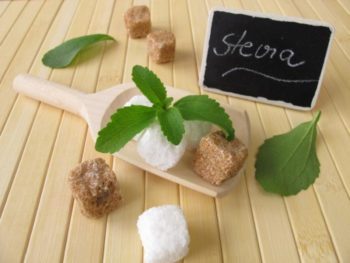
Stevia is the natural sweetener from the stevia plant. Look for pure liquid stevia, pure powdered stevia, or powdered stevia with inulin; avoid stevia with maltodextrin, since maltodextrin is a form of sugar. My favorite is pure powdered stevia; though pricey, it is so concentrated that a tiny amount goes a long way and a container will last a while.
MONK FRUIT
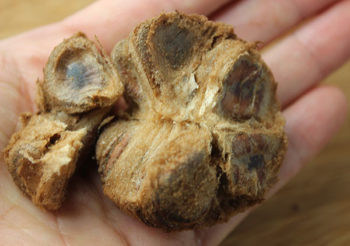
Also known as luo-han-guo, monk fruit is a rising star in the world of benign sweeteners. A growing number of people like this sweetener due to its clean, sweet taste without the aftertaste some people perceive with stevia. It may be tricky to find but is becoming increasingly available.
Also known as luo-han-guo, monk fruit is a rising star in the world of benign.
ERYTHRITOL
Erythritol is a natural sweetener found in fruit that has approximately 70 percent of the sweetness of sugar. Taking into account your increasing sensitivity to sweetness, you can use erythritol, spoonful for spoonful, just as you would sugar. It is especially useful combined with stevia.
XYLITOL
Xylitol is the most sugar like of our choice of sweeteners and can be useful for glazing and streusel effects in baking. We use xylitol only in limited quantities, however, because it has a modest capacity to raise blood sugar. Dog owners should know that xylitol can be toxic to dogs.
INULIN
Inulin is a fiber with a light sweetness that is best used in combination with other sweeteners. It also acts as a prebiotic fiber or resistant starch that can, unlike other forms of such fibers, be resistant to heating and not degrade to sugars.
For convenience, or to minimize the undesirable aftertaste that some people experience with some of these sweeteners, especially stevia, combinations of our natural sweeteners can work well, e.g. stevia + erythritol. You can purchase sweetener mixtures such as Wheat-Free Market’s Virtue sweetener, the most economical of sweetener mixes, as well as Truvia, Lakanto, and Swerve.
Bonus: 4 Sweeteners to Use Sparingly or Avoid All Together
Beyond avoiding grain-sourced high-fructose corn syrup as a source of fructose, it is also important to avoid other sources of fructose. Many of these are often promoted as “healthy” sweeteners so use them sparingly or avoid them all together:
AGAVE NECTAR (90 percent fructose— the worst of all) – COCONUT SUGAR – HONEY and MAPLE SYRUP.
PS: Living a grain-free life still means enjoying delicious and affordable foods. I have some great recipes to share with you from our friends at Wheat-Free Market.
The post 5 Safe Wheat Belly Sweeteners. appeared first on Dr. William Davis.
July 26, 2016
9 Budget Friendly Ways to Live the Grain-Free Lifestyle
There are a number of strategies that you can use to keep a lid on costs as you make your new food choices. Incorporating just a few of these can really help your budget.
1. ELIMINATE JUNK FOOD – MAKE YOUR OWN SNACKS.
Avoiding the processed foods full of harmful grains, sugars, and chemicals can save you more than just calories. Have you looked at the price of a box of crackers lately? Make your own healthy snacks.
2. CULTIVATE HERBS.
Grow your own herbs. If you don’t have the luxury of an outdoor garden you can grow herbs indoors. You will no longer have to pay for a few fresh leaves of basil, but will simply pull a few off your own plant, which will regrow in just a few days. Dry what you don’t use and save yourself a bundle.
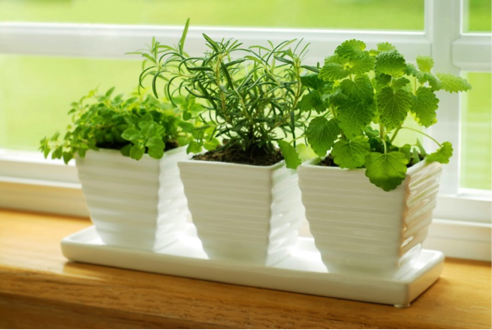
3. GROW YOUR OWN.
Grow your own fruits and vegetables. You don’t need a big, fancy garden, just a simple 5’ x 5’ plot, fertilized with coffee grounds and composted organic materials. Never gardened before? Choose the vegetables that are easiest to grow, such as: cucumbers, zucchini, and squash, and save your seeds for the next year.
4. PRESERVE WHAT’S LEFT.
If you find yourself left with more produce than you can consume. Freeze, can, or ferment the excess. Wheat Belly Total Health has some great suggestions for fermenting foods.
5. EAT FATTY OR LESS COSTLY CUTS OF MEAT.
We embrace fat: It is essential for life and is good for health. It is also satiating. Buy fatty cuts of meat, such as: chuck, rib eye, tongue, and fatty ground meat. Round, brisket, and shank, while not rich in fat, tend to be less costly cuts. If the cuts you choose are tough, don’t worry, pound them with a meat mallet before cooking or use a slow cooker.
6. MAKE YOUR OWN COOKING OIL.
Save fats in a glass jar, and set them aside to cool. Use the saved fats as your cooking oil, which is healthier and cheaper than buying bottles of polyunsaturated oils.
7. EAT MORE EGGS.
Eggs are a great source of protein and Vitamin B. Combine them with vegetables, oils, olives, herbs, and other ingredients, to make wonderful frittatas or quiches that can be exceptionally low-cost breakfasts, or even dinners.

8. DEHYDRATE FOODS.
This is one of my favorite strategies. It allows you to dehydrate leftover meats, vegetables, herbs, and fruits to convert them into delicious snacks. Spice your up meats and vegetables with turmeric, ground red pepper, sea salt, and other spices prior to dehydrating. A dehydrating device can be purchased for as little as $30 to $40 and will pay for itself after just a few uses.
9. GO DIRECTLY TO THE SOURCE.
Purchase vegetables from your local farm or farmers’ market. Subscribe to a community supported agriculture (CSA) for vegetables, eggs, and meats. By eliminating the middleman and avoiding high-end stores, you will shave off unnecessary added costs.
Yours in grainless health,
Dr. William Davis
PS: Living a grain-free life still means enjoying delicious and affordable foods. I have some great recipes to share with you from our friends at Wheat-Free Market:
The post 9 Budget Friendly Ways to Live the Grain-Free Lifestyle appeared first on Dr. William Davis.
Dr. Davis Infinite Health Blog
Recognize that this i The insights and strategies you can learn about in Dr. Davis' Infinite Health Blog are those that you can put to work to regain magnificent health, slenderness, and youthfulness.
Recognize that this is NOT what your doctor or the healthcare system provides, as they are mostly interested in dispensing pharmaceuticals and procedures to generate revenues. The healthcare INDUSTRY is not concerned with health--you must therefore take the reins yourself.
Dr. Davis focuses on:
--Real, powerful nutritional strategies
--Addresing nutrient deficiencies unique to modern lifestyles
--Deep insights into rebuilding the microbiome disrupted by so many modern factors
Follow Dr. Davis here and on social media and you can witness the extraordinary successes people enjoy on his programs. ...more
- William Davis's profile
- 160 followers



